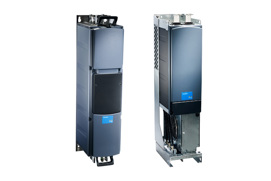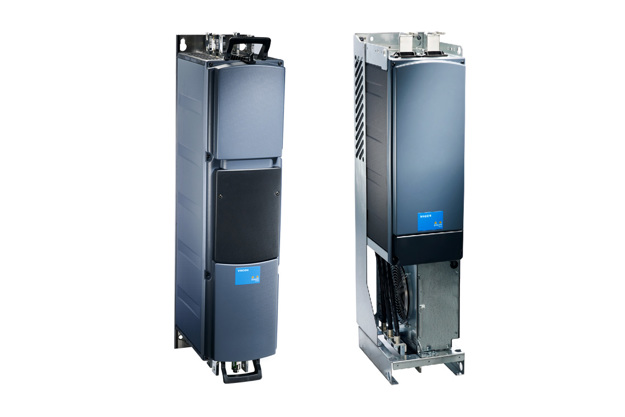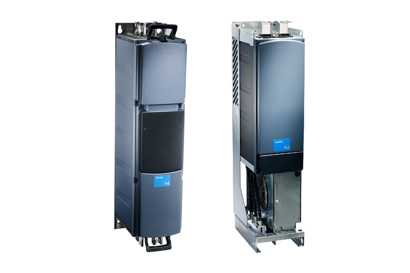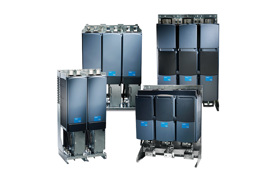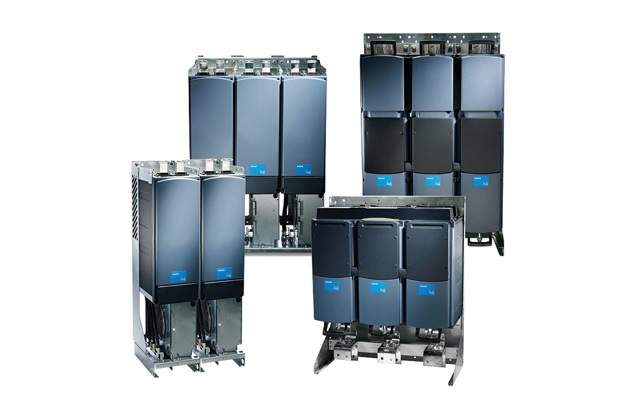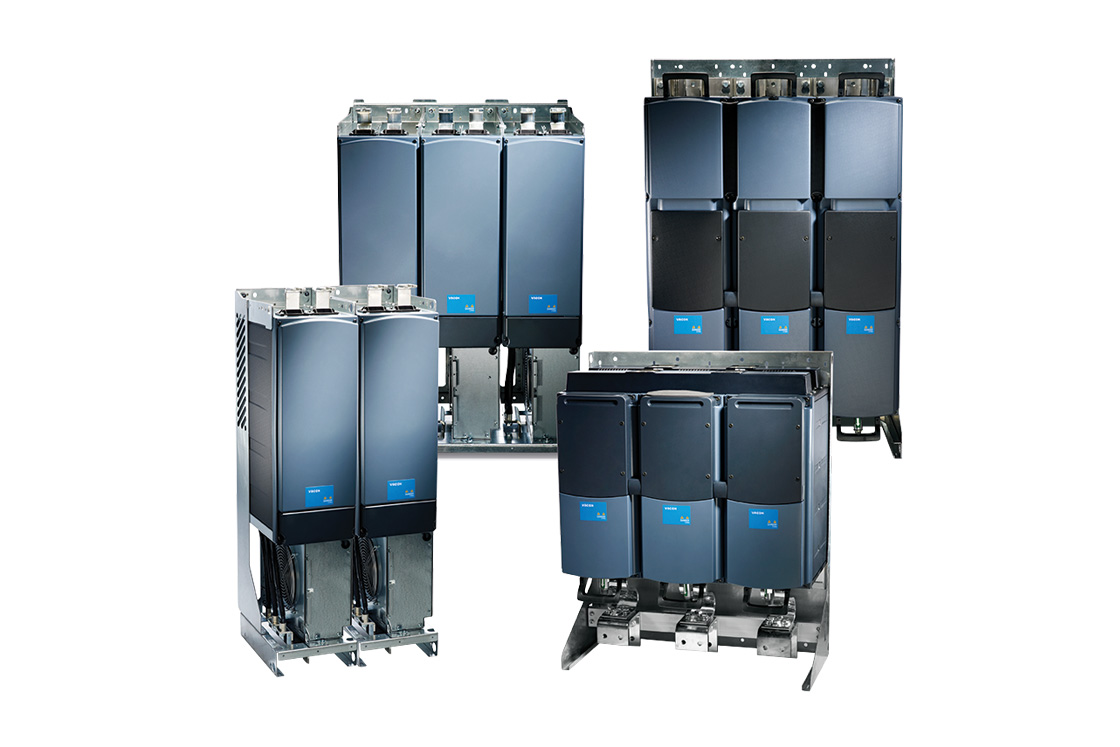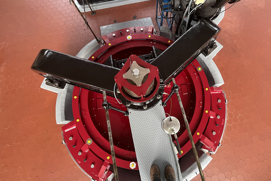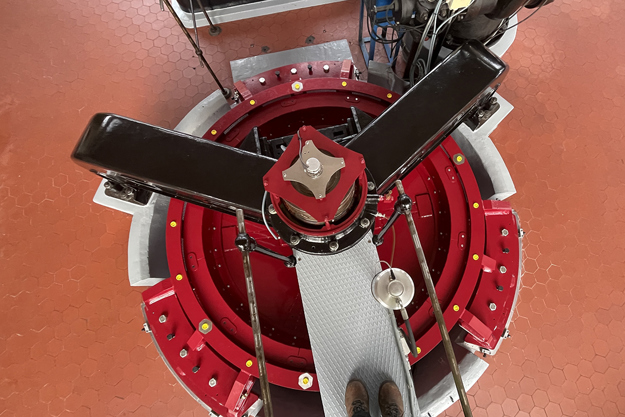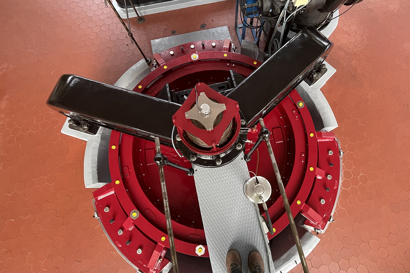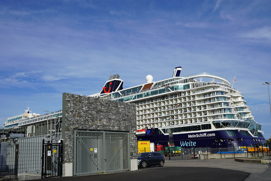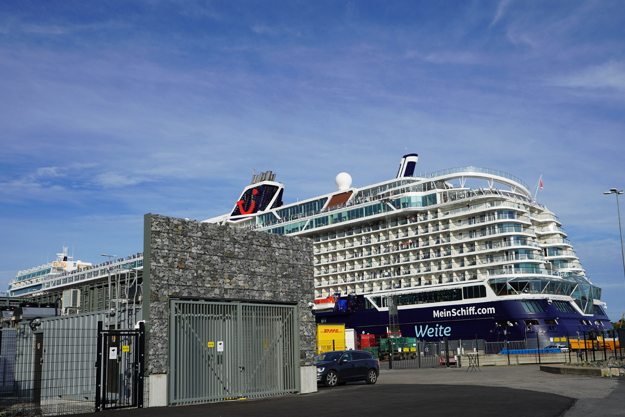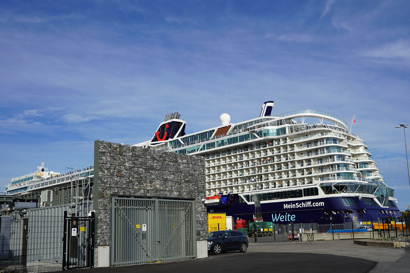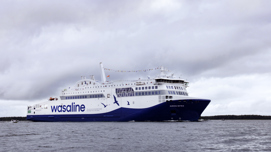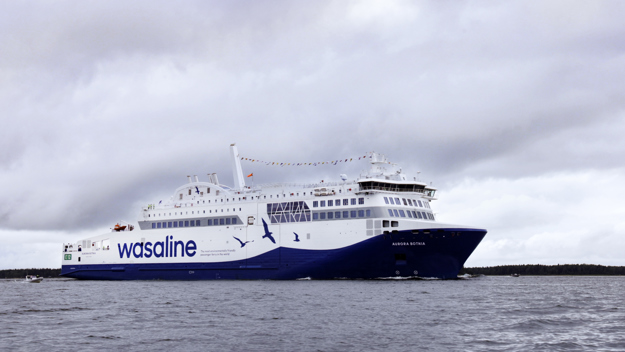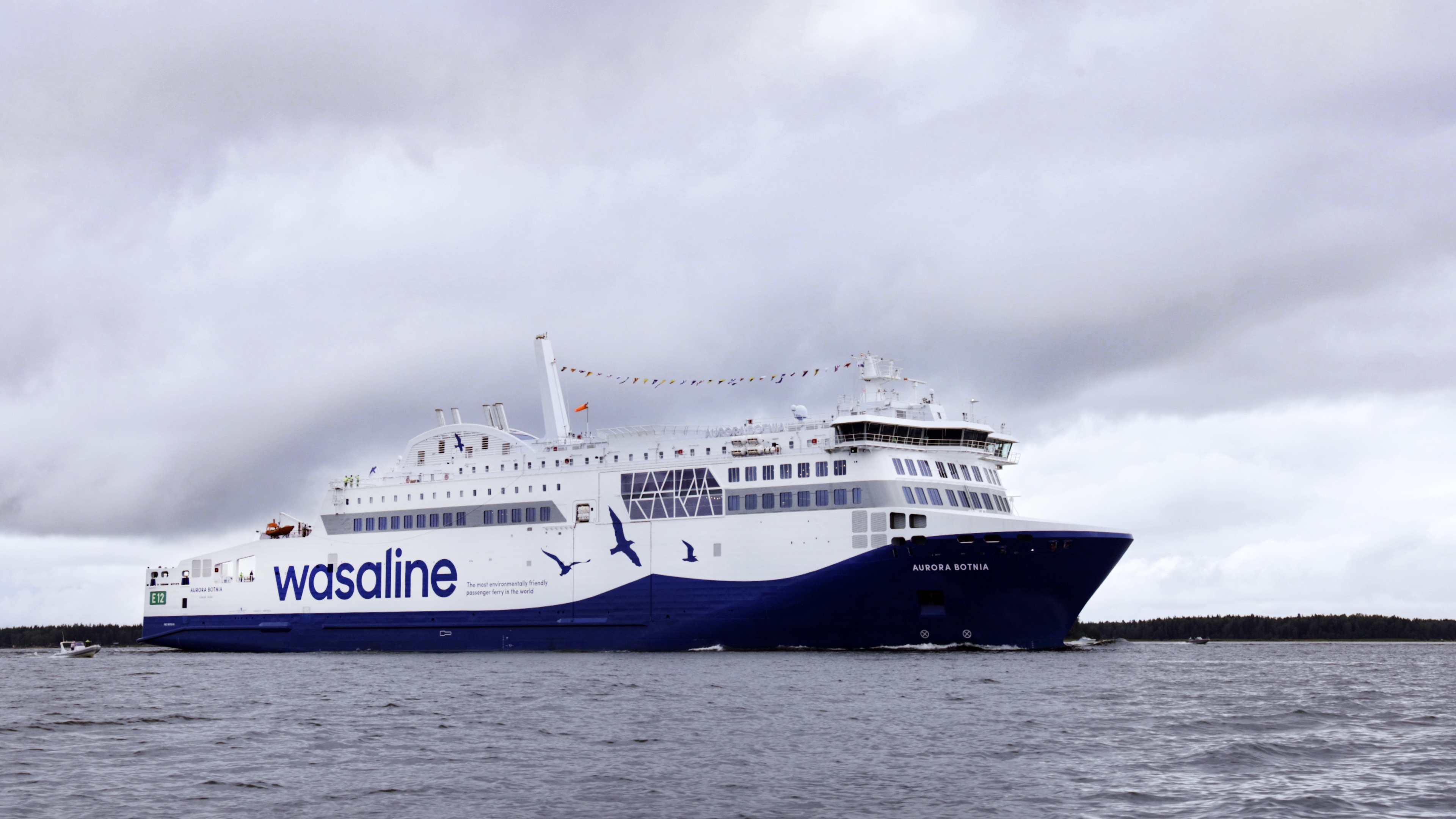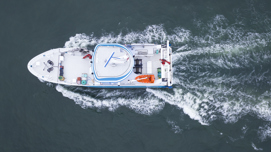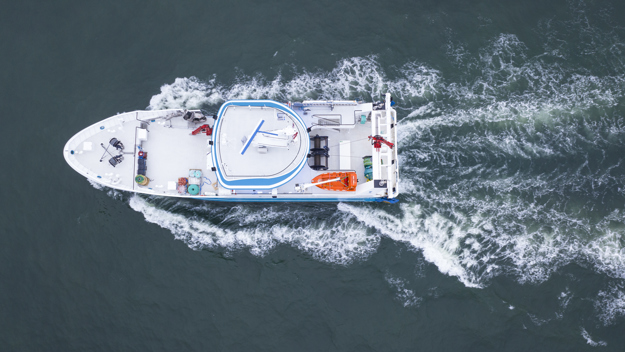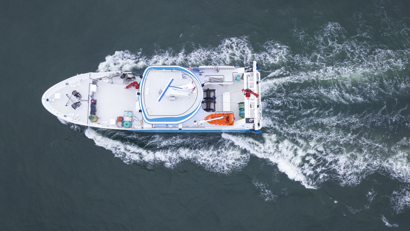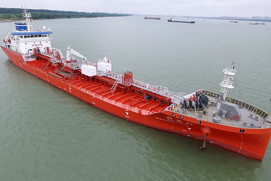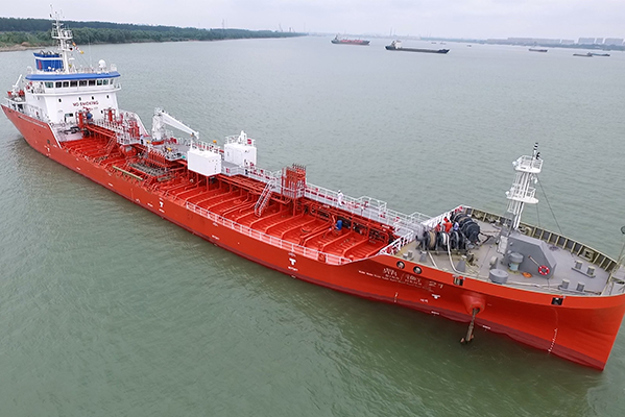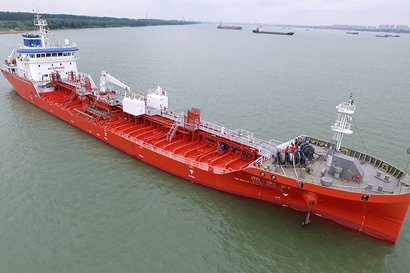NORWAY: The Hareid-Sulesund ferry operations have reduced CO2 emissions by 7000 tonnes annually with the introduction of electric vessels. In transitioning ferries from diesel to pure electric power, powerful onshore support is essential, in the form of reliable infrastructure for rapid charging capacity and stable grid supply. The systems on board and on shore act as a single system – a sophisticated and competitive system developed by Norwegian Electric Systems (NES) using Danfoss technology.

7000 t less CO2
Norwegian Electric Systems AS (NES) is a total supplier of low-emission, sustainable energy design and smart control for a wide range of vessels globally. Discover how NES cut CO2 emissions by 7000 tonnes each year on the Hareid-Sulesund ferry route.
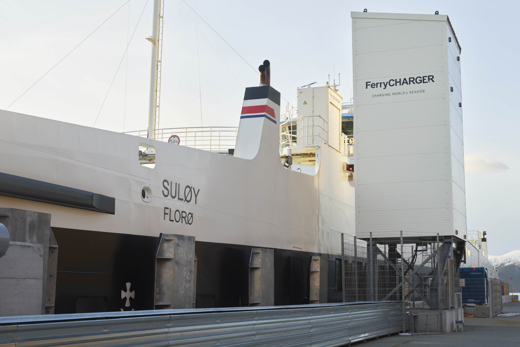
Charging 5MW in just six minutes
The electric ferry “Suloey” is about to dock at Hareid ferry terminal. The crossing from Sulesund has been made in strong headwind, with high electricity consumption during the crossing. Below decks, the electric ferry “Suloey” is equipped with propulsion, automation and charging systems from Norwegian Electric Systems (NES). “There is a need for proper charging after such a trip”, explains the captain of “Suloey”.
With a simple touch on the charging display, the fully-automated charging tower on shore connects to the ferry within a few seconds. Charging power close to five million watts ensures that the batteries on board are rapidly recharged.
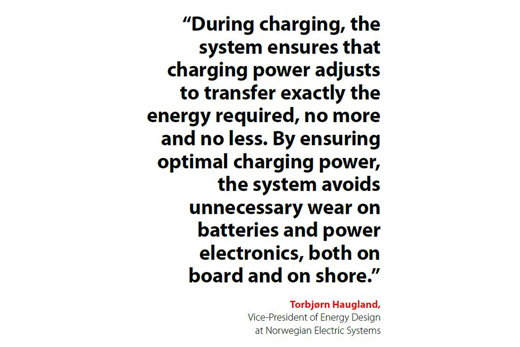
After 6 minutes, the charging system disconnects and “Suloey” sets course over to Sulesund again. Suloey, together with her sister ferries Hadaroey and Giskoey, currently makes an important contribution to reducing maritime emissions. The transition from diesel-driven to all-electric ferries on the Hareid- Sulesund crossing ensures annual reduction in CO2 emissions by as much as 7,000 tonnes, based on 32,000 vessel charging sessions every year.
Calculations at both ferry terminals showed that the existing power grid required extra power to achieve the necessary charging power. NES strengthened the power grid on both sides, and retrofitted vessels with batteries and the newest converter and power control technology, for the optimal electric-powered solution.
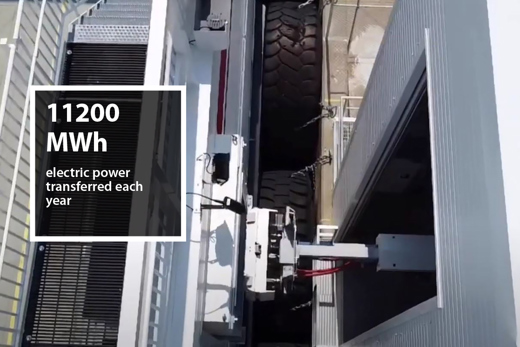
The solution
NES and Danfoss have the answers to all these engineering challenges. Håvard Wolden from Danfoss explains: “The electric ferry charges 350 kWh of power in just 6 minutes. This scale of charging places stringent demands upon the smart grid onshore in Hareid and Sulesund, which supports reliable power supply for the electric vessel rapid charging system.
NES supplemented the onshore power supply with battery storage systems powered by Danfoss grid converters, to ensure adequate charging capacity and speed. The electricity used to supply the system is supplied from renewable sources, to minimize losses and optimize operating costs.“
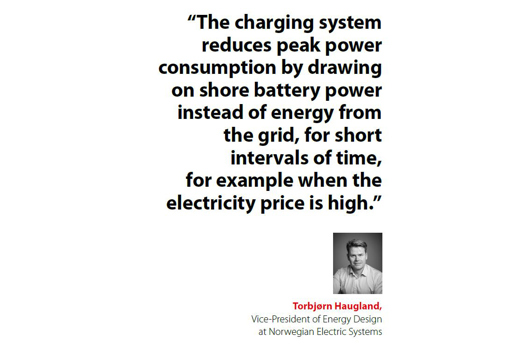
Stabilizing voltage by feeding reactive power back to the grid
The charging stations at Hareid and Sulesund are operated by Norway’s largest ferry company, Fjord1. The charging system is based on the latest power conversion and transmission technology, developed by NES.
Onshore: The grid system is based on NES-built energy storage systems using VACON® NXP Grid Converter. During charging, the vessel accumulates 5 MW power, comprising 3 MW from the local AC grid and 2 MW from the combined power of onshore batteries.
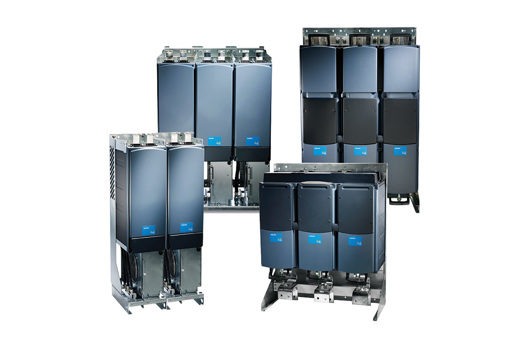
On board: VACON® NXP Grid Converter in the machine room converts the shore AC-voltage to stable DC-voltage on board. A VACON® NXP DC/DC Converter charges the batteries from the onboard DC-grid.
NES supports the crew by remotely monitoring performance from Bergen, providing technical support if challenges arise. Operational data feeds continuously to a cloud-based solution, supplying the ferry operator Fjord 1 with a full overview of electricity consumption and operational performance.
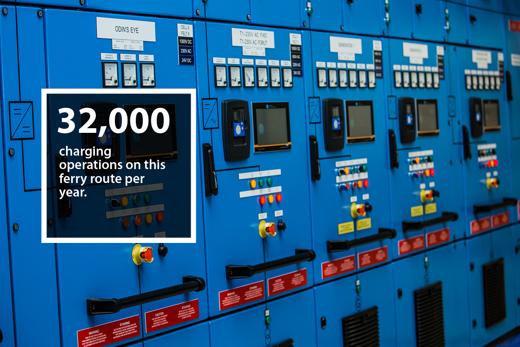
The outcome
In total, the charging stations on this ferry route perform about 32,000 charging operations and transfer approximately 11200 MWh of electric power per year.
The systems on board and on shore are fully integrated. When the ferry approaches the charging station, information about the energy consumed on the trip is communicated to the shore station. The system also checks the power grid and compensates to ensure no voltage disturbances arise. The charging system is designed to minimize voltage disturbances, feeding reactive power back to the grid during charging to maintain stable grid voltage. This in turn enables the local grid to deliver even more energy during charging of the vessel.
By actively controlling, monitoring, and supporting the grid from local batteries on shore side, the system supplies the high peak power crucial to rapid charging, with no need to scale up grid infrastructure. Instead of extra capital investment, the system relies on peak shaving functionality.
Peak shaving optimizes the energy flow between the incoming supply and local onshore storage to meet spikes in demand without disrupting the supply grid. Excess energy is stored when demand and electricity prices are low.

Reducing port emissions
Discover how shore supply systems equipped with VACON® NXP Grid Converter help port authorities meet emission targets
Products
-
if (isSmallPicture) {


 VACON® NXP DC/DC Converter
VACON® NXP DC/DC Converter最大限度地提高混合动力解决方案的能源产量,并通过将能源支持接近负载消耗来帮助提高性能。
-
if (isSmallPicture) {


 VACON® NXP Grid Converter
VACON® NXP Grid Converter空气冷却和液体冷却变频器专用于能源存储和海工能源管理设备。
Power conversion case studies
-
if (isSmallPicture) {


 捷克水力发电厂通过变频器改造提高效率
捷克水力发电厂通过变频器改造提高效率捷克:当 Albrechtice 水力发电厂用变速控制装置取代 80 年前的齿轮时,发电量增加了 10%。
-
if (isSmallPicture) {


 PSW 与 Danfoss:为靠港游轮提供灵活的岸电
PSW 与 Danfoss:为靠港游轮提供灵活的岸电挪威与瑞典:PSW (Power and Automation AS) 与 Danfoss 合作,在北欧三个港口打造紧凑型 OPS 解决方案:斯德哥尔摩、Ålesund 和 Haugesund/Karmsund。
-
if (isSmallPicture) {


 丹佛斯为 SmartGrid 大容量储能系统提供动力
丹佛斯为 SmartGrid 大容量储能系统提供动力荷兰:SmartGrid 智能电池集装箱可在 8000 个循环后保持 80% 的容量,保证每天放电和充电且可持续 21 年,而不会出现性能问题。
-
if (isSmallPicture) {


 世界上第一艘由 iC7-Marine 提供动力的渡轮:Aurora Botnia
世界上第一艘由 iC7-Marine 提供动力的渡轮:Aurora Botnia芬兰:Aurora Botnia 车客渡轮配备混合动力推进系统,由丹佛斯水冷式 iC7 变频器提供动力。
-
if (isSmallPicture) {


 Skulebas 号新一代教练船实现脱碳
Skulebas 号新一代教练船实现脱碳挪威:Maløy Fishing School 的新型教练船舶减少柴油耗用量和 CO2排放量,同时满足渔业的苛刻要求。
-
if (isSmallPicture) {


 助力全球首个直流电推化学品船提升效能
助力全球首个直流电推化学品船提升效能2022年3月18日,上海鼎衡航运科技有限公司(以下简称“鼎衡”)投资建造的全球首艘直流组网电力推进双相不锈钢智能化学品船“鼎衡19”号顺利交付,而为“鼎衡19”提供核心动力的,正是采用了丹佛斯传动 VACON® 系列变频器和 VACON® NXP DCGuard™ 固态开关的直流组网电力推进系统。

